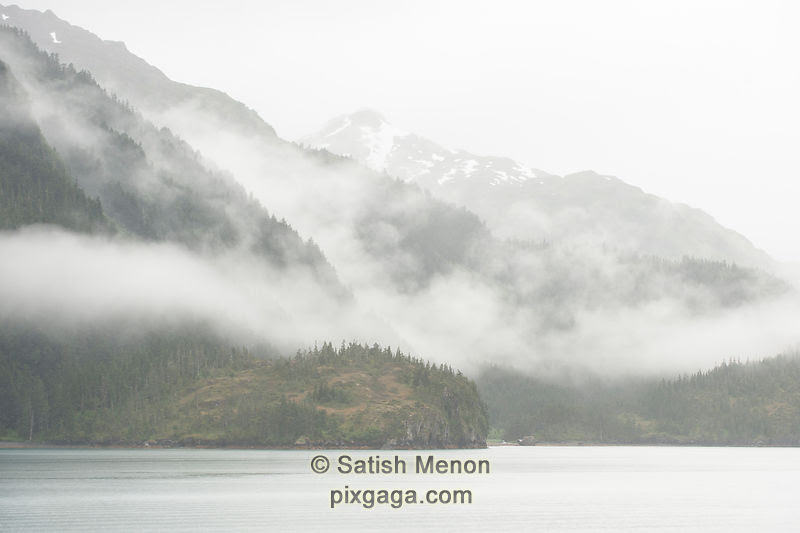When I come across something interesting to photograph, I do not click one image of an obvious composition and walk away. I start with the obvious compositions, but I keep refining and altering my position, until I have attempted a lot of variations. Very often, when I review my work later in Lightroom, I find that my later refinements bring out the fine keepers.
I photographed a waterfall along Fern Creek in Muir Woods, CA, last week. Let me illustrate how I worked the composition in that case.
The following image is the first image I made when I saw the waterfalls.

The first image made of the waterfalls
This first image has a number of branches coming in the way of the view of the falls. Clearly, I don’t like it and try another shot by moving a bit. The next image shown here removes a bunch of the blocks and the view is somewhat clear. However, one fern leaf snuck into the lower end of the image. It is important to understand that I was viewing through the viewfinder on my f2.8 lens, but I was shooting f22. This causes this fern leaf to be almost invisible in the viewfinder, due to shallow depth of field, but it shows up in the f22 image. Plus there is a brown twig in the lower left of the image. I see all this in my LCD panel and decide to try again.

The next image made
I moved and made the following image, in an attempt to remove distracting blocks to the view of the falls. The following image has problems though. Some other brown dried leaf has now snuck in, plus the brown twig on the left is still there.

The next image made
After some more adjustments to my tripod position, I made the following image. This composition is almost OK, but, during the 30 second long exposure, I got distracted talking to my kids in the nearby trail and accidentally touched/hit the tripod during the exposure. Observing the top edge of the rock, just after the falls, I realize that it is not exactly sharp, due to the accidental hit to the tripod during the exposure.

The next image made
I try again, this time getting a sharp image, with minimum distractions.

The next image made
Taking one of the final frames during these series, as my base, I decided to use Lightroom to crop it and develop further. FInally, I removed some branches and twigs to clean it up further. The final result is as shown below.

My final finished image
Many beginners ask me what I mean, when I say “work the composition more”. I decided to illustrate using this example.
Let me know if you have any feedback on this post.




















